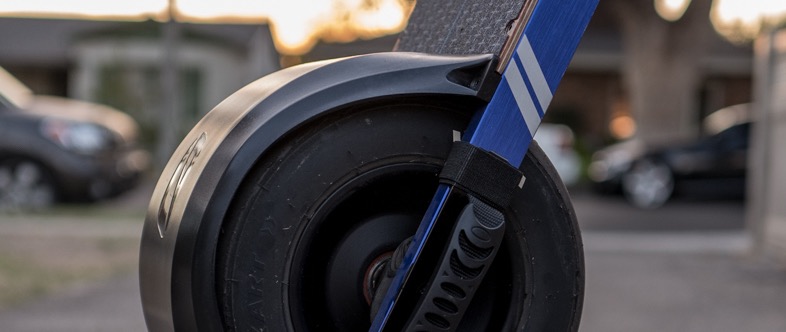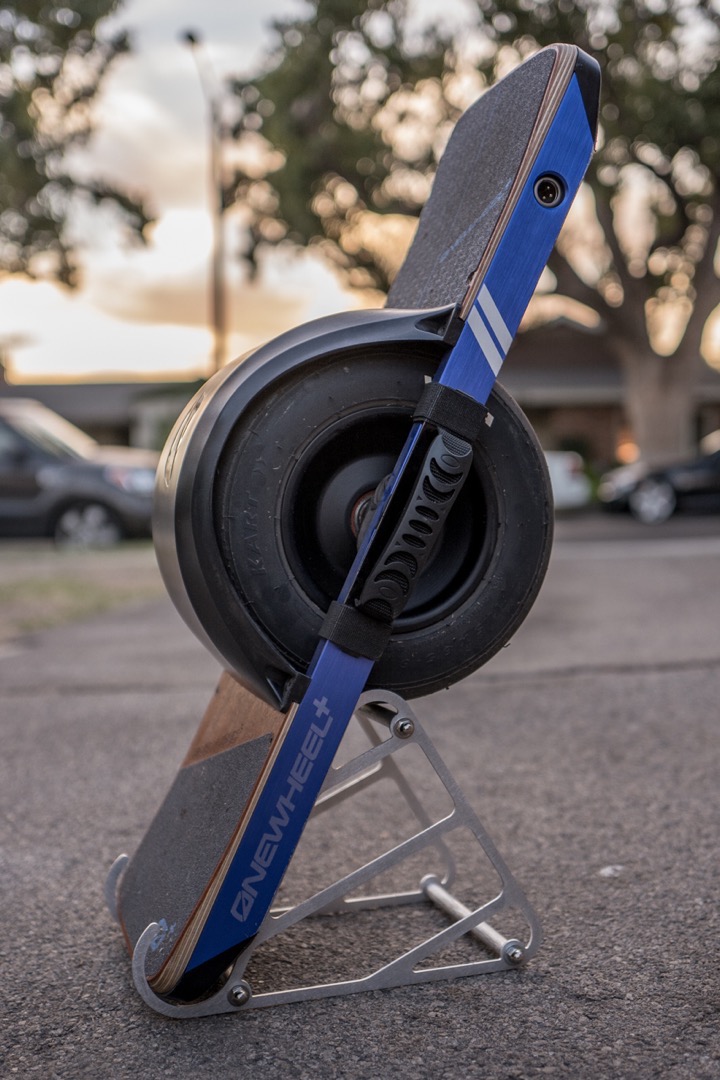The OneWheel Is For Social Media Influencers

[7/30 UPDATE] I’ve added below info on the original self-balancing One Wheel scooter (that I know of) that was designed back in 2007 by Ben Smither (upon which Free Motion’s design is clearly based).
…and if there’s one thing I never was or will be, it’s a social media influencer, ergo, the OneWheel was a mistake for me. I also value my knees, and my overall physical health and well being, and the OneWheel does not really take any of those things into account as a means of personal short range transportation…very short range transportation that’s a pain to carry when it’s time to do that.
OneWheel+ (and its predecessor and successor the XR) have been pitched as the closest thing you can get to snowboarding in the summer. Maybe for some people this is true, but for me, notsomuch. Quite the opposite in fact. For me it was unwieldy, unstable, and unusable. Sure, there are people who likely could find better balance on this thing than I could. But here’s the thing, what it does have in common with snowboarding, makes it significantly more dangerous – that is, you are going to fall off, and in some cases, you’ll fall off by design, and that’s simply unacceptable because unlike snow, hard asphalt and the hard packed dirt trails that Future Motion markets the OneWheel as being ideal for are just that: hard. Failling on snow isn’t going to do much to you, but hitting asphalt hurts. It hurts a lot. I know. I’ve done it without the help of a OneWheel or bicycle or anything else (although I’ve fallen from both of those too). You can do exceptional damage.
Additionally, OneWheel’s regenerative coasting has no way to stop charging the battery when it reaches a full charge, and so, should you find yourself coasting down a hill and you reach full charge, in order to prevent a power surge and damage to the battery, the OneWheel simply shuts off, leading to a nose dive and you, the rider, potentially tumbling down the hill and even worse, into oncoming traffic. This is absolutely dangerous beyond an acceptable level. It is also doubtful that regenerative coasting adds any kind of significant overall range to the OneWheel’s cap of seven miles.

The method for activating the balance is hit and miss and depends largely on the type of shoe you’re wearing and your ability to break contact with both sensors in the pad. I never mastered it, and I don’t think most people do. So you spend most of your time dismounting it by awkwardly tilting it heel or toe side until it tips over on you. Not particularly smooth looking. The diameter of the wheel may also lead to a very uncomfortable stance and, in my case, knee pain. For reference, I’m 5 feet, eleven inches tall.
Speaking of stance, let’s talk about stability, it doesn’t have it. Because it has a singular footprint and its axis and center of gravity are in fact, dead center, every single variation of the surface you are riding on translates in to some kind of roll or yaw movement that you don’t see coming. Turns are wide, and if you are approaching a blind corner on a sidewalk, pray nobody’s coming up from the other corner because you will take them out.
When you’re not riding the OneWheel (due to its frequent need for charging or in areas it’s simply not allowed…like the place you rode it to, to begin with), it’s a royal pain to carry around. The ends feature a graspable lip, or you can buy an aftermarket handle (I did), but you also have no choice but to buy a fender as well, lest you want all the junk on the OneWheel’s tire rubbing up on your hipster chinos or shorts (spoiler alert: you don’t and it will), but setting aside figuring out how to carry it, there’s also the matter of its sheer size and weight. It’s big. Bigger than photos would suggest and because it has its giant kart wheel in the center, you have to sustain its weight at a distance from your body.
[Update] Another thing about OneWheel that had always irked me somewhat was their claim of being super innovative and unique in the transport space. They weren’t. The OneWheel’s design was largely cribbed from Ben Smither who developed the platform back in 2007. The two main differences between what Ben created and what Free Motion is selling are that Ben’s design utilized a belt-drive system and had low quality video of pasty white British lads riding it in a parking lot somewhere in the UK and OneWheels utilize a hub motor in the wheel and feature videos of tanned lean surfer hipster dudes and ladies riding it in on California coast highways, forests, and beaches. Okay, and the foot sensor, but the foot sensor in the OneWheel really isn’t that good yet.
I had wanted to include the above when I originally posted this but the original site and info had moved to a different URL so I had to do a little digging to find it.
But let’s give it credit where credit is due. The build quality was utterly superb (as it should be being made in a small facility in Santa Cruz, California), it’s tough as nails for a complex electronic device, and let’s face it, it’s cool. Really cool. I got tons of praise during my time riding it (little did they know what was going through my mind on the thing…I still said ‘thank you.’). But the issue there, is that it doesn’t bestow its coolness onto uncool people who do cool things. I snowboard, I ride motorcycles, I travel to the ends of the earth, but people don’t think I’m cool, they think I’m foolish and dangerous (not the cool kind of dangerous, the kind they don’t want around). So in the end, a symbiotic relationship the OneWheel and I did not make, so I sold it.
Really, you’re going to go down. And knee pain, you’re going to feel a lot of knee pain.
